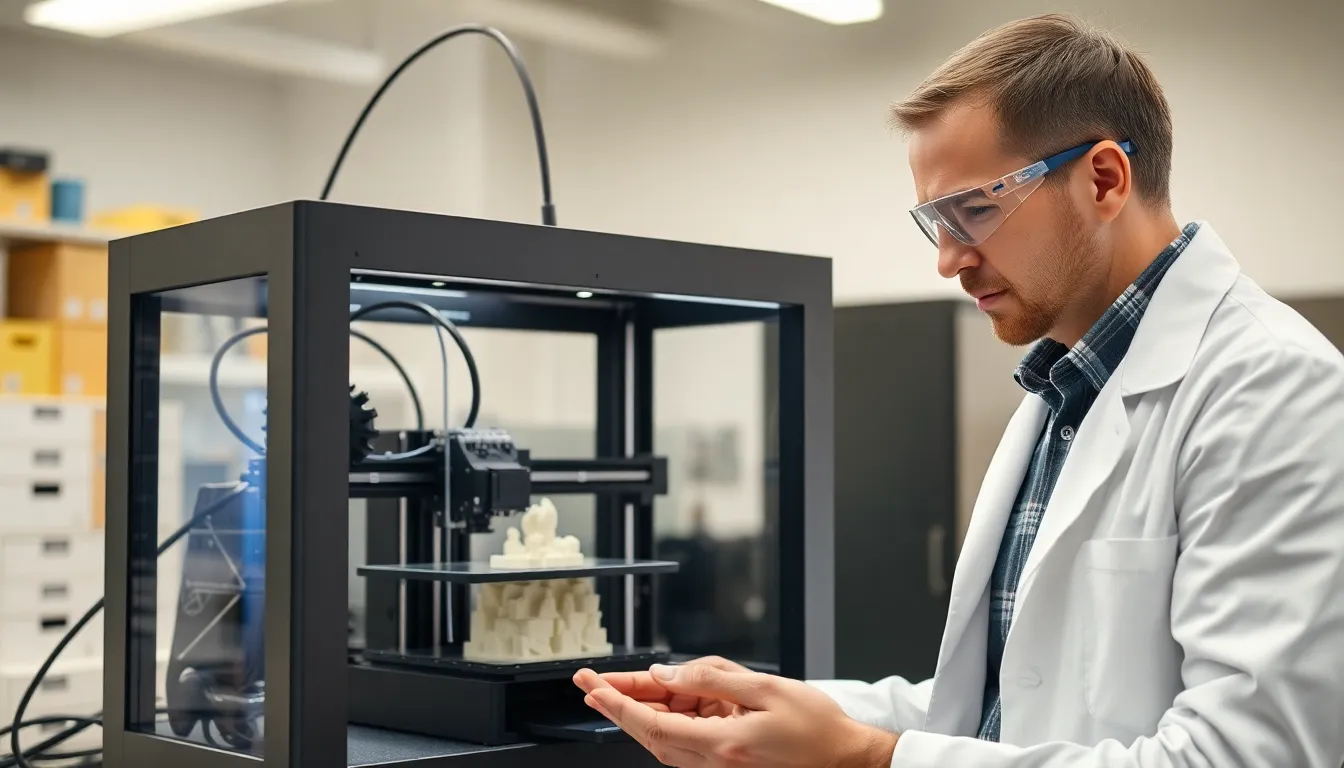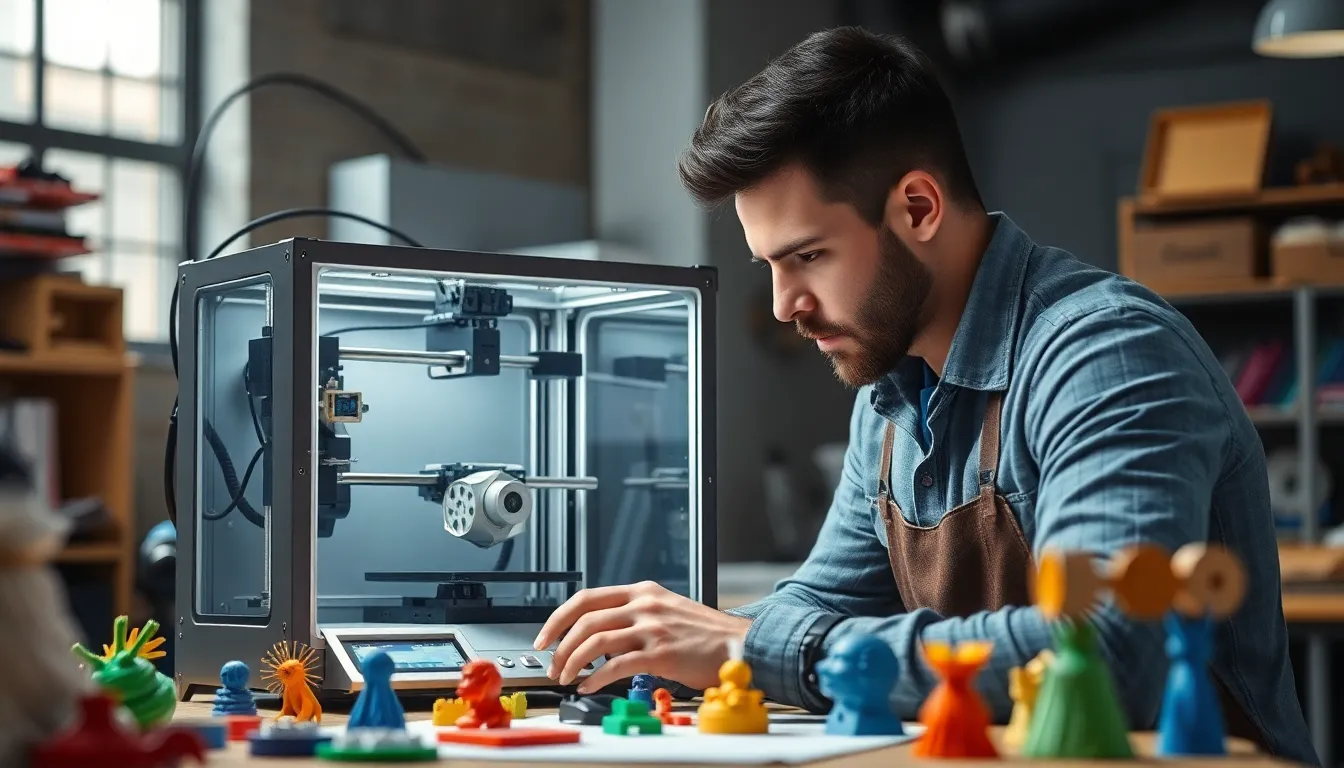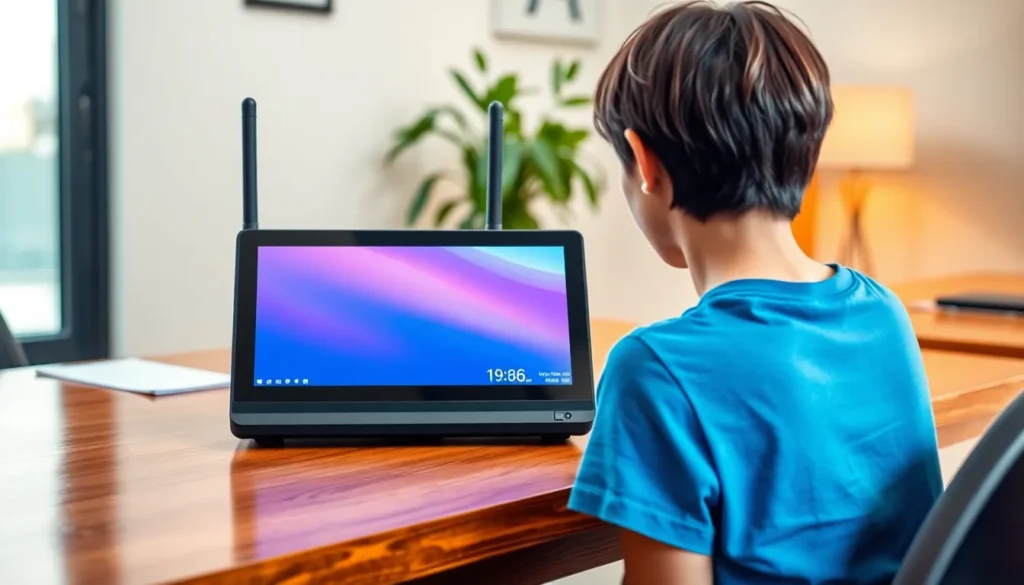In recent years, 3D printing has revolutionized manufacturing and design, offering a world of possibilities. This innovative technology allows creators to transform digital models into tangible objects, streamlining production processes and reducing costs. With its ability to produce complex shapes and customized items, 3D printing is changing the way industries approach prototyping and production.
The advantages of 3D printing extend beyond just efficiency. It fosters creativity by enabling rapid iteration and experimentation, allowing designers to bring their visions to life with ease. As businesses increasingly adopt this technology, they unlock new opportunities for personalization and sustainability, making 3D printing a game-changer in today’s fast-paced market.
Table of Contents
ToggleOverview of 3D Printing
3D printing refers to a manufacturing process that creates three-dimensional objects from digital models. This technology employs various methods, including additive manufacturing, where materials are added layer by layer. As a result, it produces complex shapes that traditional manufacturing methods may struggle to achieve.
3D printing enhances production efficiency significantly. It reduces lead times by allowing for rapid prototyping, enabling designers to bring concepts to fruition quickly. This method streamlines the production process, reducing the need for extensive tooling and molds, thus lowering costs.
Additionally, 3D printing fosters innovation and creativity. Designers can experiment freely with different materials and designs, leading to unique products tailored to specific needs. Personalization becomes easily attainable, allowing businesses to cater to individual customer preferences.
Sustainability plays a crucial role in 3D printing’s advantages. This technology minimizes waste by using only the required amount of material for each item, unlike traditional methods that often dispose of excess material. As sustainability concerns grow, 3D printing emerges as a viable solution for environmentally conscious production.
Overall, 3D printing stands out as a transformative force in manufacturing and design, reshaping how products are created and distributed in the modern marketplace.
Key Advantages of 3D Printing

3D printing brings notable benefits that enhance manufacturing processes and product development. Below are key advantages that set this technology apart.
Cost Efficiency
Cost efficiency emerges as a primary advantage of 3D printing. This technology reduces manufacturing expenses by minimizing material waste and eliminating the need for extensive tooling. According to a report from Deloitte, companies can save up to 90% in production costs when shifting to additive manufacturing. Traditional production methods often involve costly methods for molds and tooling; 3D printing circumvents these expenses. Additionally, the capacity to produce small batches of items without incurring high overhead costs makes 3D printing attractive for startups and small businesses.
Rapid Prototyping
Rapid prototyping represents another significant advantage. 3D printing allows designers and engineers to produce prototypes quickly, with turnaround times reduced from weeks to just days. This speed facilitates iterative design, where changes can be made and tested promptly, leading to improved final products. A study by the Wohlers Report indicates that 3D printing can decrease the prototyping phase by over 50%. The fast production cycle helps companies keep pace with market demands and shorten time-to-market for new products.
Customization
Customization stands out as a pivotal feature of 3D printing. This technology enables manufacturers to create tailor-made products that meet specific customer requirements. Customers can request unique designs, and 3D printing adapts easily to these requests without substantial investments in new tools or molds. Many industries, including healthcare and fashion, utilize this capability to provide personalized solutions, such as custom implants or bespoke clothing items. A survey by McKinsey found that 70% of consumers are interested in personalized products, underscoring the value of customization in today’s market.
Environmental Benefits
3D printing offers significant environmental advantages by promoting sustainable practices and reducing material waste.
Reduced Waste
3D printing minimizes waste through its additive manufacturing processes. Unlike traditional manufacturing, which often involves cutting away excess material, 3D printing builds objects layer by layer, using only the required amount of material. Studies indicate that 3D printing can reduce material waste by up to 90%. This efficiency not only conserves resources but also lowers disposal costs for manufacturers. Additionally, on-demand production eliminates the need for excess inventory, further decreasing waste and energy consumption associated with storage.
Sustainable Materials
3D printing enables the use of sustainable materials, such as bioplastics and recycled composites. These materials, derived from renewable sources or waste products, can significantly reduce the environmental impact of manufacturing. For example, some companies are successfully utilizing recycled plastics, transforming them into filaments for 3D printing. As technology advances, the variety of sustainable materials continues to expand, allowing manufacturers to embrace eco-friendly practices while maintaining product quality.
Impact on Various Industries
3D printing significantly affects various industries, enhancing processes and outcomes through innovative applications. The technology’s versatility and efficiency enable tailored solutions across diverse sectors.
Healthcare
3D printing revolutionizes healthcare by facilitating the creation of customized medical devices and implants. Surgeons can use patient-specific models derived from imaging data for preoperative planning, improving outcomes. Furthermore, 3D printing enables the production of prosthetics and orthotics tailored to individual anatomical requirements, reducing costs by approximately 70% compared to traditional methods. Bioprinting, a cutting-edge application, allows for printing tissues and organs, potentially addressing the organ donor shortage.
Manufacturing
3D printing enhances manufacturing capabilities by streamlining production processes. With additive manufacturing, companies reduce lead times significantly, going from weeks to days for new product development. This efficiency leads to lower inventory costs and reduces the risk of overproduction. Manufacturers can produce complex geometries that traditional methods struggle with, improving design flexibility. This technology fosters innovation by allowing rapid design iterations without the financial burden of tooling changes.
Education
3D printing transforms education by providing students with hands-on experience in design and manufacturing. Institutions use 3D printers to create interactive learning materials, enhancing STEM education. By engaging students in real-world applications, educators foster creativity and problem-solving skills. Access to 3D printing encourages collaboration on projects and prepares students for careers in technology-driven fields, reflecting industry demands.
3D printing is undeniably reshaping the landscape of manufacturing and design. Its ability to enhance efficiency while reducing costs positions it as a game-changer across various industries. The technology not only fosters creativity but also supports sustainable practices by minimizing waste and promoting the use of eco-friendly materials.
As businesses continue to embrace 3D printing, they unlock new possibilities for customization and rapid prototyping. This innovative approach not only meets market demands but also enhances overall product quality. With its numerous advantages, 3D printing is set to play a crucial role in the future of production, driving both innovation and sustainability.





